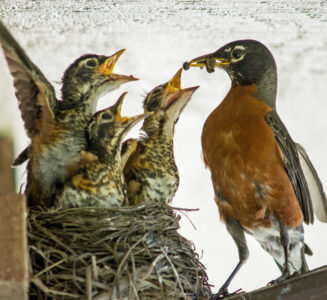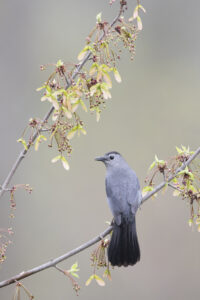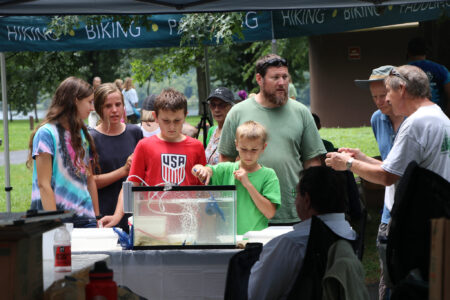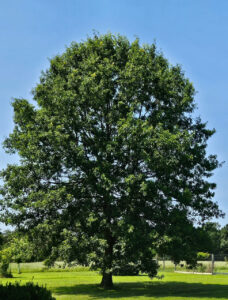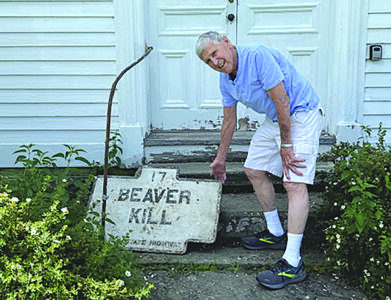Welcome birds into your backyard
- PHOTO PROVIDED A robin is shown feeding her hatchlings in this photo by Dori Eldridge which won an Audubon Photography Award in 2013.
- PHOTO PROVIDED A gray catbird is shown posed on a branch in this photo by Sandra Rothenberg which won an Audubon Photography Award in 2019.

PHOTO PROVIDED A robin is shown feeding her hatchlings in this photo by Dori Eldridge which won an Audubon Photography Award in 2013.
A catbird was skulking around the forsythia in my backyard one random morning, but she was stealthy enough to keep their nest a secret. The bird box was full of sticks with a tidy nest of a house wren, complete with five eggs.
Two young robins just left their nest to face the world. These, and many more, are birds of my summer backyard.
I’m reflecting on the joy of birding in my backyard. It is typical of the suburbs in our region: a little grass, some shrubs, two tall trees. And there are birds here, nesting, passing through, just living. The same is true of your backyard. A variety of birds have adapted to our environment, making their homes close to ours.
And if you have gotten this far in this edition of Bird Lore, then you know that your backyard is a great place to start to learn more about the birds of our region. Whatever your setting, you can build your knowledge of birds and care for your environment right in your backyard.
Let’s start with robins. This orange-breasted denizen of suburban yards everywhere is one of the most common birds around, because it is perfectly suited to the landscape that we have designed.
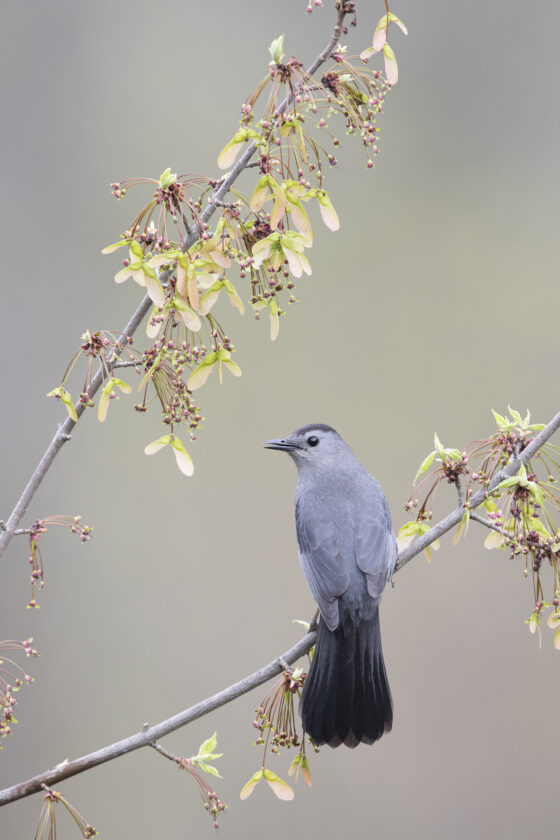
PHOTO PROVIDED A gray catbird is shown posed on a branch in this photo by Sandra Rothenberg which won an Audubon Photography Award in 2019.
Robins like what we have built: some grass, a couple of bushes in the corner, and maybe a small tree. No one consulted the robin when this prevailing landscape was taking shape, but “if you build it, they will come” holds again, and the robin came to our backyard and owned it.
We can learn much about the local life of birds by watching robins. They build nests in a dense shrub, sit on their eggs for a couple of weeks, feed dependent young as you walk by, or as the local cats prowl about. Then they care for the resulting speckle-chested young for a few weeks and do it again, two or three times during the summer.
If you spend a little time looking, you will find other birds close to home, living out a similar routine.
The plaintive mourning dove is a year-round resident, and about as adaptable as a robin. The handsome song sparrow is probably nearby, but being small and, well, a sparrow, you might not give it a second look. While the list of native birds that survive as our close neighbors is not long, these neighbors provide a great introduction to the broader world of birds. The house, or English, sparrow and European starling, though not originally native to North America, are now dominant features of our towns and cities.
So native or introduced, a variety of birds are living out their lives around us, and as such, provide opportunities for us to understand the natural world a bit more.
The variety of birds in your backyard depends on what they find there. Adding a few native shrubs and reducing the chemical treatment of your lawn will provide a bigger variety of birds. And outdoor cats are hard on local birds. Big lawns may have lots of robins, but not much else.
Native shrubs and flowers add to the variety of foods and cover that benefits a greater variety of life. A slightly overgrown shrub can introduce a catbird to the mix, or the lovely brown thrasher. A steady array of flowers may attract a hummingbird. With enough low bushes, you may have a common yellowthroat, a small warbler.
The list grows from there.
Large trees line many streets in town, providing welcome shade during the heat of summer — and we’re sure thankful for them this year. Those tall trees host a variety of insects that support birds typical of woodlands and forests. Some of those forest birds wander into tree-lined streets. One of Pennsylvania’s most common birds may be unfamiliar to you: the red-eyed vireo. It spends the summer almost anywhere there are a few tall trees, raising its family before heading south to winter in the Amazonian rain forest.
Yes, a globe-trotter could spend the summer in your backyard.
As you become more familiar with the birds in your backyard, you will also notice the changes that come with the seasons. But with cold winter winds come seed-eating birds from the north. We may not be looking forward to winter, but with it will come dark-eyed juncos and white-throated sparrows. Here again, it makes sense to provide the plants that will provide food for winter birds, and to supplement that with a bird feeder.
This is a glimpse into the real lives of dozens of local birds, including many that you can host in your backyard. You can find guidance on making subtle changes to your backyard that will improve your bird experience at online resources such as Audubon.org.
Making small changes will benefit your local birds and enhance your opportunities to enjoy them. So peek out the window. What’s living out there?
Dan Brauning has a long and storied career in ornithology and the PA Game Commission. He played a major role in the restoration of PA’s super-raptors (bald eagles, ospreys and peregrine falcons) after their near-extinction several decades ago; he co-authored the first PA Breeding Birds Atlas and served as an editor for the Pennsylvania Society of Ornithology’s Pennsylvania Birds for many years. Brauning continues to spread his love of and education about birds in the Central PA region.

